Find out what the propagation and garden teams have been up to this week.
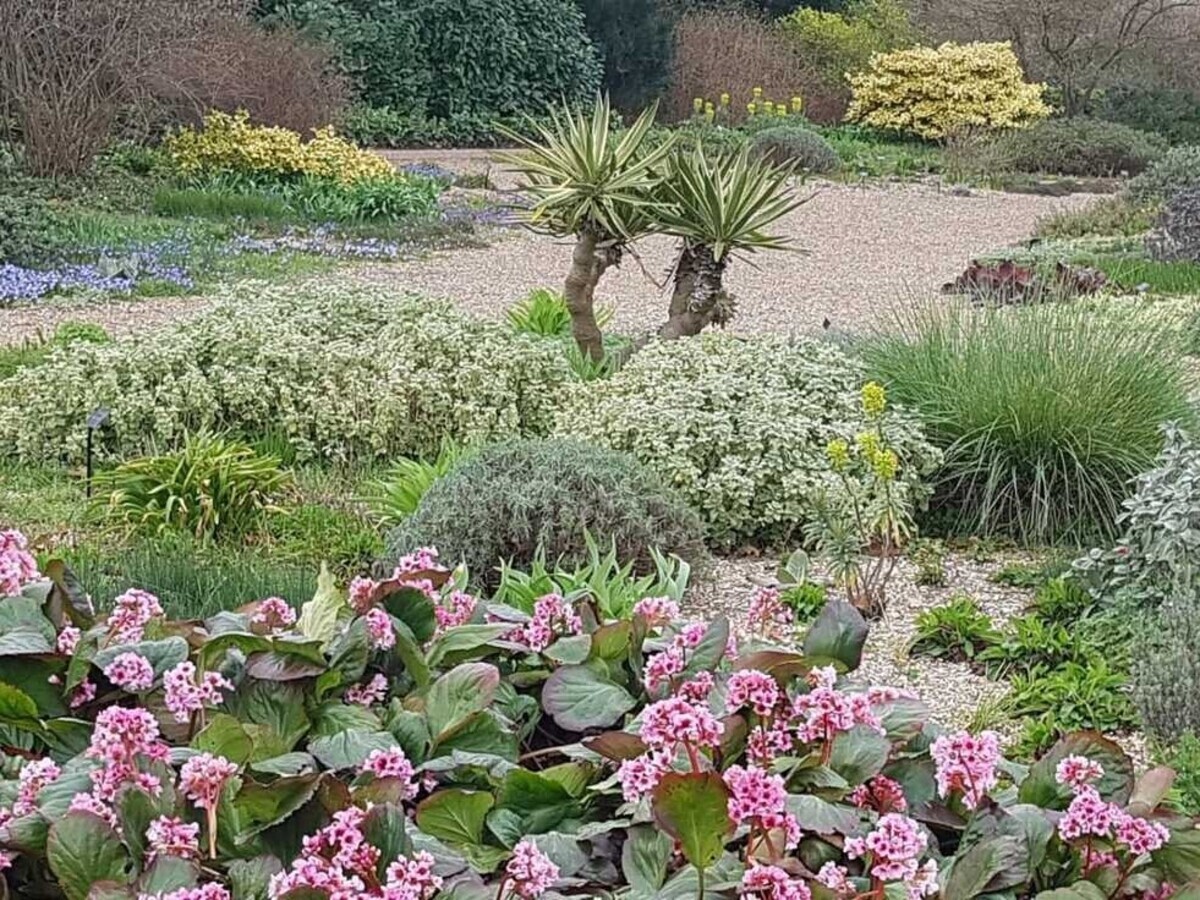
Some of our favourite plants for spring
Anemones, whether tall or small, can produce a host of colours, from early spring all the way through into autumn. They enjoy a range of conditions, from open and dry locations, like alpine meadows, through to the dappled shade of woodlands.
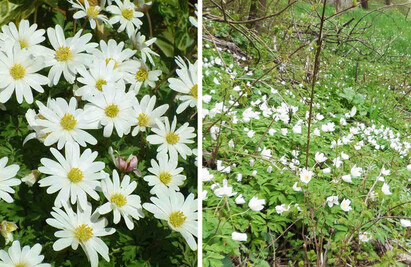
Anemone blanda gives swathes of colour and is happy to gently spread through your border, protected by other perennials later in the year. The vibrant blue-purple flowerheads are a joy in spring, and can be complemented by the white variety: Anemone blanda 'White Splendour‘ (pictured in close-up above).
Alternatives to Anemone nemorosa (pictured in the woodland above) are Anemone nemorosa ‘Lychette’, with larger flowers, or Anemone nemorosa ‘Alba Plena’, many petalled.
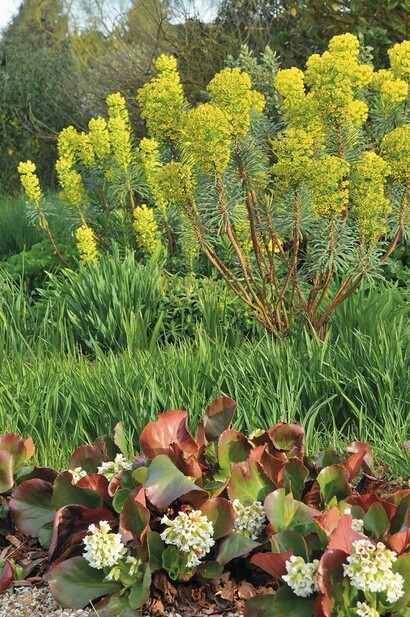
Euphorbias or spurges, are a huge genus with over 1500 species, from herbaceous perennials and shrubs to spiny succulents resembling cacti. Flowers are often insignificant, but their showy bracts provide much interest.
We use them throughout the garden, but little tops the zingy spring yellow of Euphorbia epithymoides 'Major'. Providing showy rounded hummocks in our gravel garden, in contrast to the grey and silver foliaged plants.
They tend to be very popular and we are often waiting for plants to grow on and become saleable: if they aren't in stock now, Euphorbia epithymoides 'Major' and Euphorbia characias subsp. wulfenii the plants we are most asked about, should be available soon. Also one not to be missed, is E.epithymoides ‘Candy’ with its attractive young bronze tinted foliage.
Planted beneath the euphorbia above, are our 'indispensible' elephant's ears. Beth's garden and nursery have become well known for the use of these, despite many people considering these to be a bit of a 'marmite' plant.
Bergenia can provide all year round colour, particularly pinks, reds and whites, whether from its long flowering season or from its foliage. Very tolerant of a range of conditions, but growing them in sun tends to increase flowering and reduce foliage size.
B. crassofilia 'Autumn Red' has relatively small leaves but they turn a fantastically vivid red in autumn with soft pink early summer flowers.
As with the euphorbia, because of the popularity of Beth's bergenias, we are often waiting for them to grow on in spring, but you can be notified of their availability by clicking on each variety.
The popular B. cordifolia 'Purpurea' is one to put on the list: it's a superb plant, ideal for groundcover with strong colour in both summer and again in autumn.
Same goes for the pretty B. 'Beethoven' (a hybrid) and B. 'Mrs Crawford' (pictured above). In fact, 'Mrs Crawford' was collected in Kashmir, and named the Beth Chatto Gardens 'Mrs Crawford' after a friend of Beth's who was a member of the Frinton-on-Sea flower arranging club.
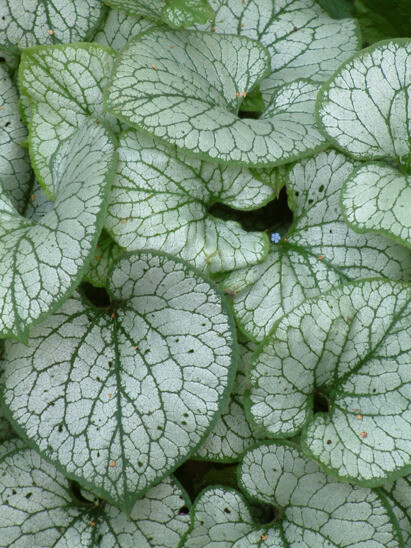
Brunnera, encompassing only three species from Asia, are like a tall forget-me-not, brightening up a dark corner with the multitude of sky blue or white flowers. They prefer a shady site; too much sun and the foliage will scorch. If it does, cut it back and new fresh foliage will emerge.
Brunnera macropyhlla ‘Jack Frost’ (pictured) has the additional benefit, of its leaves being almost entirely silvered, barring the veins and rim of the leaf. It first flowers in the spring, and is sometimes followed by a second flush in summer.
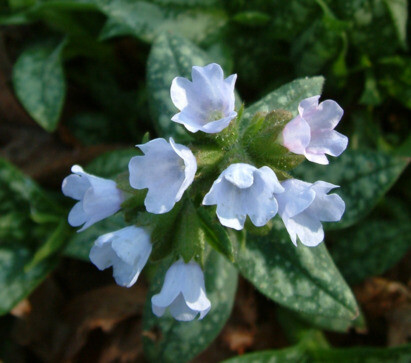
Another gem for a gently shaded site, Pulmonarias or lungworts, are usually spreading plants, with blue, pink, red or white flowers.
Some varieties have two or three different colours at the same time. As with brunnera, above, leaves can be variously speckled, or almost entirely white or silver. This is often enhanced during the year, as long as they are sited in a good soil, in part shade.
Pulmonaria Opal has delightfully pale blue to white flowers, over foliage mottled silver.
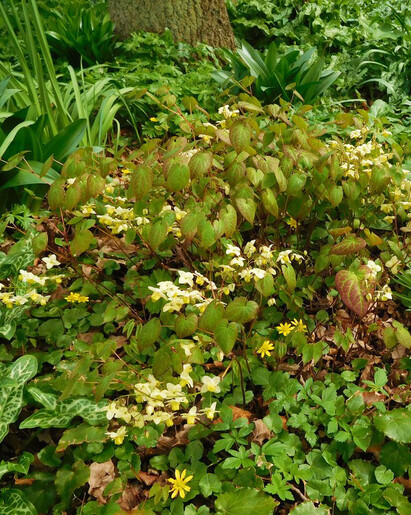
Epimediums are an herbaceous relative of the prickly Berberis family. Evergreen or deciduous, they are great ground, tough, cover, often in difficult situations, such as dry shade.
Foliage can produce various shades of reds and pinks, whilst also sheltering the newly emerging flowers, hanging off dainty stems.
Epimedium x versicolor ‘Sulphureum’ (pictured) has evergreen foliage which attains hues of bronzy red over before Christmas. Cut the foliage down during late winter to reveal the unfurling two-tone yellow flowers
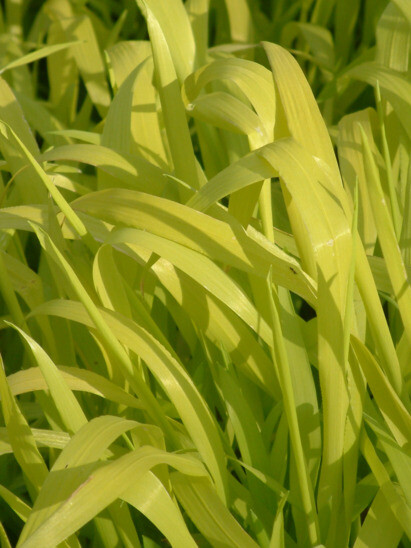
Milium are annual or perennial grasses which flower in summer and have linear leaves that are broader than many grasses.
Milium effusum 'Aureum' (pictured above) rewards you in the spring with the new foliage emerging bright yellow and thus illuminating a shady spot or corner. The effect can be enhanced by cutting back any old remaining foliage, over winter, allowing the new foliage to be shown off at its best.
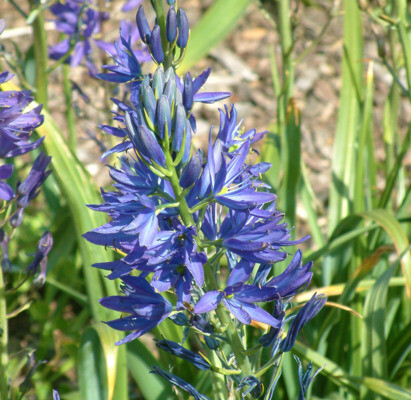
Camassia originate in the Americas, growing in meadows and prairies, with tall spikes of blue, white or cream, starry flowers.
They adapt well to naturalising in long grass, but are also happy in a variety of conditions at the Gardens, from the dry of the gravel garden to the shady woodland.
Camassia leichtlinii subsp. suksdorfii Caerulea Group has rich blue flowers, on spikes a 1m tall, which lends itself to be in amongst later flowering perennials in the border.
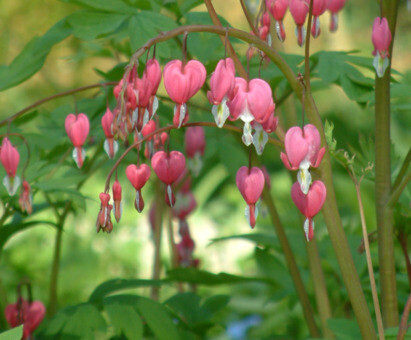
Although the name Lamprocapnos doesn’t trip off the tongue, the plants themselves (what used to be Dicentra spectabilis) are still very desirable perennials with attractively divided leaves and pendant, heart-shaped flowers.
Bleeding hearts produce their often bicolored flowers, decorating the herbaceous border during spring.
Lamprocapnos spectabilis has pink and white flowers, whereas Lamprocapnos spectabilis 'Alba' produces pure white flowers.
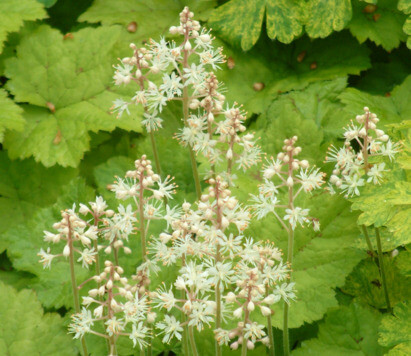
The Tiarellas are incredibly useful ground cover plants, meandering their way amongst taller perennials, knitting them together into one tapestry. Although the species tend to have simple green leaves, forms have been developed which create two tone colour effects on the leaves, giving them greater interest in the garden.
Tiarella cordifolia (pictured above) has the common name foam flower, hinting at the effect its spikes of white frothy flowers have amongst other perennials.

COMMENTS